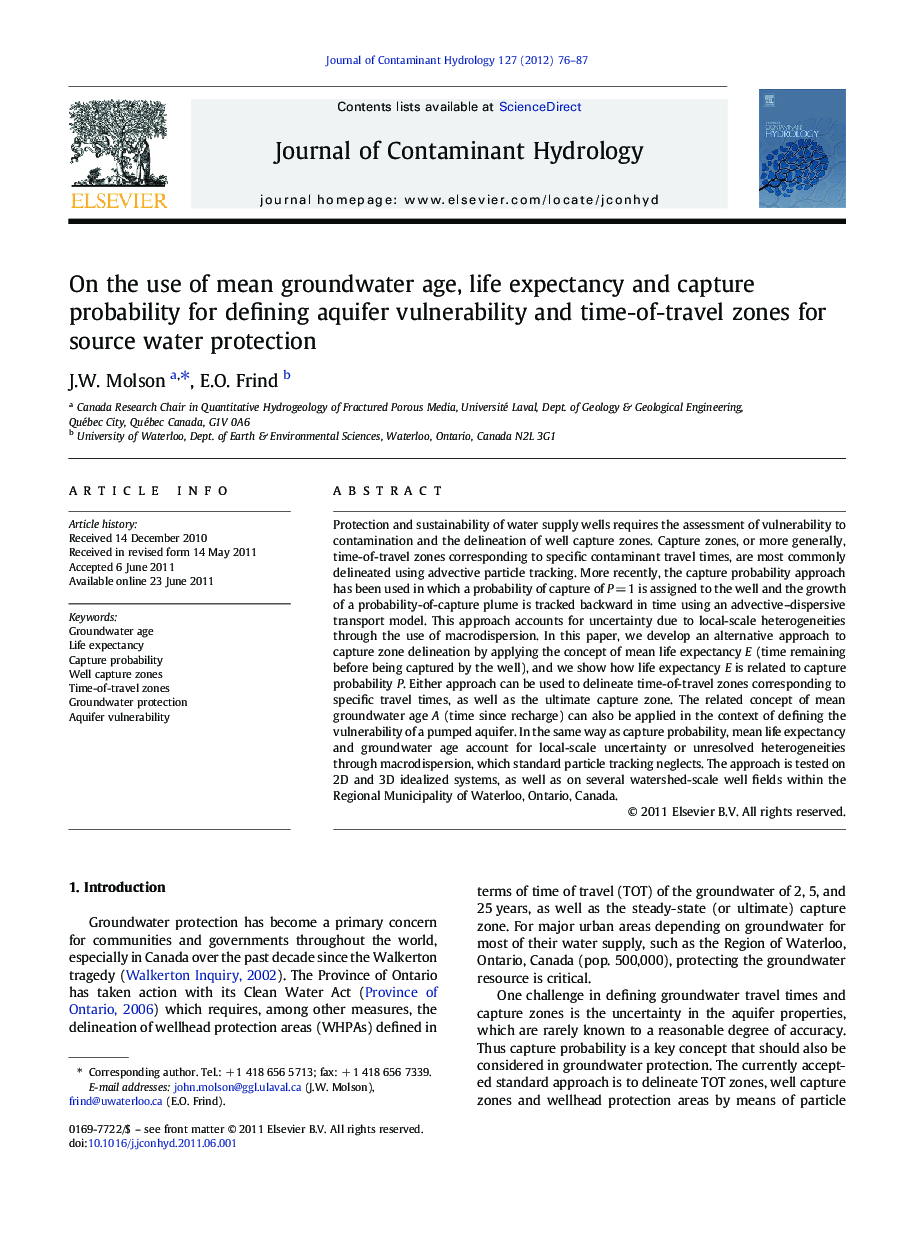| کد مقاله | کد نشریه | سال انتشار | مقاله انگلیسی | نسخه تمام متن |
|---|---|---|---|---|
| 4546889 | 1627073 | 2012 | 12 صفحه PDF | دانلود رایگان |

Protection and sustainability of water supply wells requires the assessment of vulnerability to contamination and the delineation of well capture zones. Capture zones, or more generally, time-of-travel zones corresponding to specific contaminant travel times, are most commonly delineated using advective particle tracking. More recently, the capture probability approach has been used in which a probability of capture of P = 1 is assigned to the well and the growth of a probability-of-capture plume is tracked backward in time using an advective–dispersive transport model. This approach accounts for uncertainty due to local-scale heterogeneities through the use of macrodispersion. In this paper, we develop an alternative approach to capture zone delineation by applying the concept of mean life expectancy E (time remaining before being captured by the well), and we show how life expectancy E is related to capture probability P. Either approach can be used to delineate time-of-travel zones corresponding to specific travel times, as well as the ultimate capture zone. The related concept of mean groundwater age A (time since recharge) can also be applied in the context of defining the vulnerability of a pumped aquifer. In the same way as capture probability, mean life expectancy and groundwater age account for local-scale uncertainty or unresolved heterogeneities through macrodispersion, which standard particle tracking neglects. The approach is tested on 2D and 3D idealized systems, as well as on several watershed-scale well fields within the Regional Municipality of Waterloo, Ontario, Canada.
► Life expectancy and age provide a unified concept for groundwater protection.
► The concept accounts for local-scale uncertainty through macrodispersion.
► Life expectancy is directly related to capture probability and time-of-travel zones.
► Groundwater age can be used to assess well vulnerability.
► Age-based approaches can yield more conservative travel times than particle tracking.
Journal: Journal of Contaminant Hydrology - Volume 127, Issues 1–4, 1 January 2012, Pages 76–87